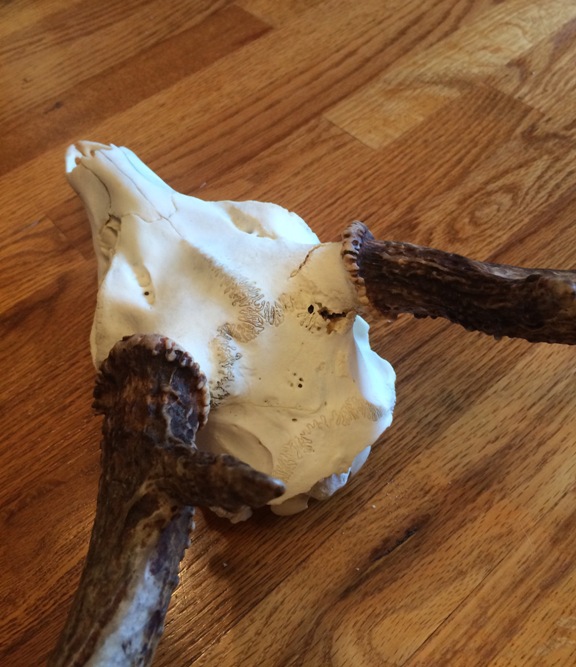Understanding Brain Abscesses
Filed under: Hunting Blog
A recent harvest of a buck we call Gappy yielded some interesting post harvest findings. Gappy was seen on our Reconyx cameras early during November with a blind eye and wounds to his head. It appeared he had been in a recent tussle. Over a month later, on December 18, I was fortunate enough to harvest him. During the recovery process we inspected the blind eye but also noticed infection around the base of his left antler. We were interested to see what the skull looked like once we got the European mount back.

Gappy’s skull post harvest. This hole was caused by a brain abscess; note the pitting around the hole.
At first glance we noticed a large hole in the skull and a hairline fracture around the left pedicle. The hole is deep enough to see a small amount of light coming into the brain cavity. These signs pointed to a severe condition known as a brain abscess. If I had not been fortunate enough to have harvested Gappy, the road did not look promising for him. Discovering his condition encouraged me to further research brain abscesses.
Most abscesses start out as a cranial abscess or simply an infection of the head. A specific bacteria (Trueperella pyogenes) forms in these injuries. Once present the bacteria begin to erode the skull. In the case of Gappy, the eroding away of the skull caused a large hole to form (see photo). The bacteria had progressed enough to reach the brain cavity. Once this occurs this condition is known as a brain abscess. This condition is usually fatal once the bacteria reaches the brain cavity. In some cases a deer can fight the infection off and survive a cranial abscess. If so, there are usually signs of pitting where the bacteria began to erode the skull plates.
Cranial abscesses have the ability to cause serious injury and even lead to death. As you hit the woods in search of shed antlers this winter be sure to look for any signs of a brain abscess. A buck with a brain abscess can shed portions of their skull when antlers are cast. If you don’t shed hunt, but have European mounts from past harvests, examine those for potential cranial or brain abscesses. There is always much to learn even after the harvest is over!



